mwc2014
Latest

Qualcomm betting on octa-core tech and better LTE radio in China
Despite Qualcomm's odd stance on octa-core and 64-bit in the past, the company has clearly changed its mind since last week's launch of its Snapdragon 615, which includes both features. Qualcomm's marketing VP Tim McDonough, who briefly spoke to us after his meeting with Oppo at MWC, admitted that this new chip is partly aimed at the ever-demanding Chinese market. "It's very interesting. Consumers in China want octa-core. It's very high on their list; while in the US and Western Europe, it's totally other things that consumers want," the exec said. "So we've really recognized that if that's what Chinese consumers want, that is what our Chinese customers, our OEMs want, and Qualcomm has to care for that need; so that's what we're doing."
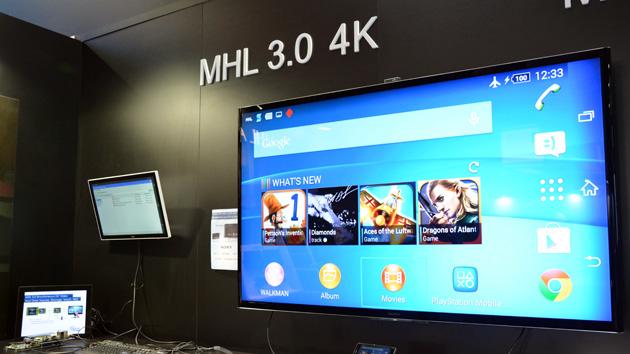
MHL 3.0 does 4K video output, 10W charging and data transfer over a single cable (video)
You may have already followed the announcement of Sony's Xperia Z2 and Xperia Z2 Tablet last week, but did you know that they are also the first mobile devices to feature MHL 3.0? For those who haven't caught up, this standard allows 4K video output -- over a bandwidth of 6 Gbps -- from a micro-USB port, while giving back up to 10W of power to keep your phone or tablet juiced up. Better yet, you also get a dedicated 75 Mbps channel for data transfer, as opposed to just 1 Mbps in earlier versions, which is only enough for HID input (like keyboard, touchscreen, mouse and even gesture control). It's still snail pace compared to the likes of USB 3.0 and Thunderbolt, but at least you can now transfer files to and from your mobile device over the same cable. Besides, it's possible to achieve a higher transfer rate of up to 600 Mbps using special connectors, such as USB 3.0's 10-pin configuration. At MWC last week, Silicon Image demoed MHL 3.0 -- powered by its SiI8620 transmitter chip -- working between an Xperia Z2 and a Sony 4K TV, with the bonus capability of navigating through the phone using the TV's remote. The company also showed off file transfer between a USB drive and a Snapdragon 800 development board over MHL 3.0, though products (likely monitors, set-top boxes and docks) that support this feature won't be out until later this year. For now, you can check out our demo video after the break.

Weekly Roundup: Galaxy S5 hands-on, Engadget's 10th birthday and more!
You might say the week is never really done in consumer technology news. Your workweek, however, hopefully draws to a close at some point. This is the Weekly Roundup on Engadget, a quick peek back at the top headlines for the past seven days -- all handpicked by the editors here at the site. Click on through the break, and enjoy.

Mobile World Congress in 14 lines
In Barcelona we all tried to thrive And strove to not imbibe too many beers When Samsung trotted out the GS5 Then shortly after highlighted new Gears. Mozilla's and Ubuntu's phones seemed cheap, Along with some of Waterloo's new wares, But Sony's flagship stuff's atop the heap And Blackphone puts an end to snooping scares. Though what of HTC and LG, too? Those also-rans with rivals large and strong? They talked of their Desires and G Pro 2 While we were wond'ring if Nokia's wrong. It wasn't long before the show had ended And we'll be back next year, our livers mended. (image credit: Getty Images)

Mobile World Congress 2014 report card: who made the grade?
Now that Mobile World Congress is behind us and we've left the sunny Mediterranean to go back to our rainy or snowy abodes, it's time to reflect on the show that was. We walked through miles and miles of hallways and battled thousands of roller bags and suits to find the show's best and worst. There were Nokia phones running Android, 7-inch phones, new wearables with curved displays and even a couple connected toothbrushes. We also saw zero Windows Phones, very little Tizen and a whole lot of Firefox OS. You'll be able to find the fruits of our labor through our Events page, but we wanted to take a quick look back at some of the biggest companies that we covered throughout the past week. How well did they do at the most important smartphone show in the world? Who was the big winner of MWC, and how good was the show itself? We've put together a report card that discusses the overall performance of each major company, so read on to get our take on the week that was.
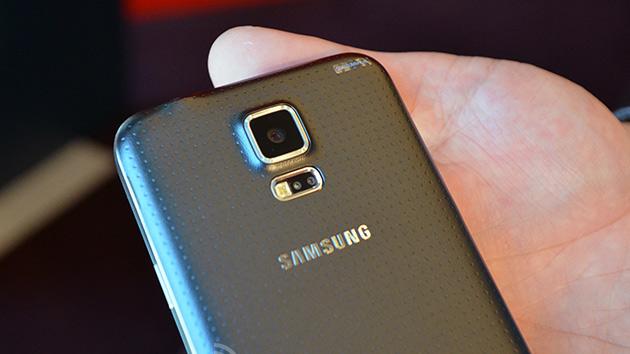
Why did Samsung play it safe with the Galaxy S5's processor?
Of all the phone manufacturers out there, Samsung seems to have a particular talent for creating an anticlimax. Our first thought when holding the Galaxy S5 was that we'd been through all this before a year ago, with the equally underwhelming launch of the GS4. Our disappointment jibed with the reactions of other bloggers around us at Mobile World Congress and with many readers' comments on our hands-on article. Folks seemed to forget about the phone after five minutes and switch their attention to Samsung's new smartwatches, especially the delectable Gear Fit. First impressions aren't everything, however. A phone's charm can take a while to sink in, and you only have to look at the Galaxy S3 for proof of that. (I reviewed that handset many moons ago, and must admit that I never expected it to do as well as it did.) As add-ons go, the swipe-based fingerprint scanner and heart rate monitor may not be astounding now that we've had the HTC One Max and fitness gadgets like the Withings Pulse, but they might prove their utility in time. Even if they don't, the GS5 has other redeeming features, such as its 1080p AMOLED display, phase-detection autofocus and basic water resistance, and it comes at just the right time to win over GS3 owners whose contracts are coming to an end. But the anticlimax is there nonetheless, and it most likely stems from a suspicion that Samsung's vast scale and manufacturing strength isn't being fully exploited. Like Apple, but unlike most other phone makers, Samsung has control over many different technologies that go into a smartphone, including the memory, display and -- most importantly -- the processor. It showed us glimpses of this cross-discipline expertise with the global versions of the Galaxy S2 and S3, whose in-house Exynos processors brought extra speed and graphics just when Android needed it, and it did something similar with the big-screened, stylus-equipped Galaxy Note series. But the GS5, like the GS4, seems much less distinctive, and so perhaps what we should be asking is this: Why isn't Samsung able to muster its in-house resources to create something truly different? And that, at least, is a question we can begin to answer.
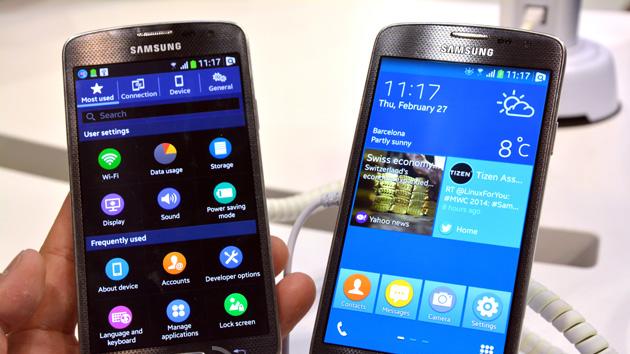
Hands-on with Samsung's vastly improved Tizen OS
Samsung's device lineup may still be heavily dominated by Android, but change is in the air. Tizen, the open-source OS it jointly develops with Intel, powers the company's three new Gear wearables, and smartphones are coming later this year. We got the chance to play with Samsung's latest Tizen phone prototype, which runs a customized build (version 2.2.1) of the platform, allowing us to see what's changed since the last time we saw a Samsung developer handset. While there's still plenty of similarities between the prototype and what we've seen in the past, Samsung's worked to incorporate parts of its Android design language, particularly in the apps drawer, notification tray and homescreen widgets. Not only do they look better, each of the elements are more feature rich than before, offering users greater control over the device and making it feel like a complete platform. The company insists the platform isn't designed to replace Android, affirming that it forms part of its "multi-OS strategy," but given its recent wearable overhaul, we'll never say never. Check out the hands-on video below to see what a Samsung mobile future without Google could possibly look like.

The next mobile imaging war won't be waged over megapixels
For the past several years, improvements in smartphone cameras have followed the "more megapixels" mantra. Samsung's Galaxy S5 is up from 13 to 16 megapixels; Sony's new Xperia Z2 packs a 20.7-megapixel Exmor model; and Nokia's Lumia 1020 with PureView is a 41-megapixel monster. However, Google's recent sensor-laden smartphone prototype, Project Tango, could herald a new direction. Though Mountain View is focused on 3D mapping, so-called depth camera tech could dramatically improve all the pictures you take with your smartphone. By using two lenses with different focal lengths, for example, you could zoom in on subjects with quality that rivals bulky optical zooms. It could also eliminate a number of other shortcomings without adding an awkward hump like the one seen on the Lumia 1020. You could soon have much better light sensitivity, less noise and depth of field control that rivals a DSLR. The benefits are clear, but Google is not alone in its pursuit. The battle for a better smartphone camera is on, and you could be the one to reap the rewards.
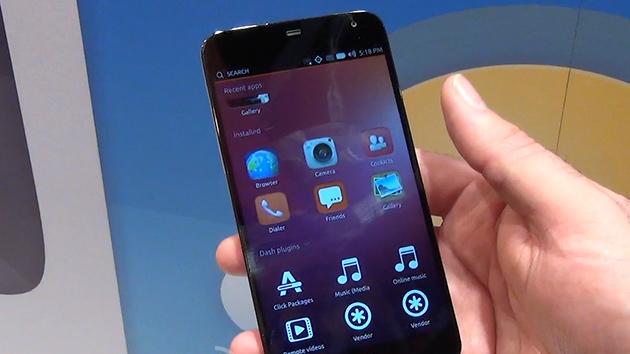
What to expect from the first generation of Ubuntu smartphones (hands-on)
The Ubuntu Touch smartphone OS has come a long way, but it still has further to plod before it's ready for market - all Canonical will tell us that it hopes to see an Ubuntu phone before the end of this year. Nevertheless, now that some phone manufacturers are on board with the project, we've been able to play with a couple of prototypes: One was just a non-functioning handset from a Spanish company called BQ, showing off plain but solid build quality reflective of a mid-tier device. The other was more interesting -- a re-purposed Android handset from a second Ubuntu partner, Meizu, which makes light work of the operating system and interface. The UI itself hasn't changed a great deal since we last tried it, and neither has the underlying mission, which is to create an OS that extends seamlessly across phones, tablets and PCs, with virtually the same apps running on each type of screen. Check out the hands-on video below to get a better of what Canonical is aiming at, or -- if you don't mind getting your hands dirty -- try the new dual-boot developer preview for yourself on an Android handset.

A new version of the Moto X is coming this summer
After Lenovo's recent purchase, questions immediately arose surrounding Motorola's planned device launches for 2014. In a Twitter Q&A surrounding the events at Mobile World Congress, the handset maker revealed that the next version of its popular Moto X is coming in "late summer." Unfortunately, that's about all the outfit was willing to spill for now, but we'll be curious to see how things like manufacturing play out in the coming months.

Hands-on with Gionee's super slim, octa-core Elife S5.5 smartphone (video)
It's only been a week since Gionee debuted its super thin Elife S5.5 Android phone in China, but luckily for us, the company also brought it along to MWC. After playing with the 5.55mm-thick device for some time, we were left very impressed with its build quality. The aluminum frame was nicely machined and felt solid, whereas the Corning glass back panel added an extra premium feel, despite leaving fingerprints behind. We still struggled to believe that there's a 1.7GHz octa-core SoC inside such a slim device, let alone a 2,300mAh battery and two nice cameras -- 5 megapixels on the front and 13 megapixels on the back. It should be noted that the rear imager and its LED flash do stick out a little, but it's not that noticeable in the corner. The S5.5 will come in several colors, with our favorite being the white and gold combo. We managed to have a quick chat with Gionee's president William Lu, who was amused by how folks from Sony, Samsung and Nokia kept going back to his booth to inspect his company's masterpiece. Well, if they don't mind splashing out about $375, they can grab one for themselves in China come March 15th; but the phone will eventually arrive in other countries (though the US is definitely not on the list). Meanwhile, feel free to check out our hands-on video after the break.
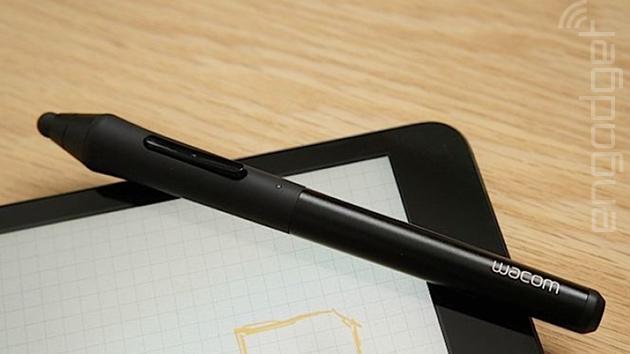
Wacom lets people share handwritten notes across devices and platforms
Wacom has been pushing into the world of mobile for a while, and its efforts have just culminated in a pretty bold move: A single, cross-platform standard for sharing handwritten notes and sketches between users, regardless of whether they're using a stylus or a finger, an iPhone or a PC, an app or a browser. The tool is called "WILL" -- "Wacom Ink Layer Language" -- and it captures a pen stroke's coordinates, pressure and the identity of its creator (through a unique "Pen ID"), as well as allowing the scribble to be edited by others. Users can also see other people's handwriting being created in real-time, i.e. we're not just talking about static images. Beginning next month, Wacom will promote WILL by distributing SDKs for iOS, Android, Mac OS and Windows, as well as for browsers and cloud platforms. These SDKs are meant to make it easier for developers to create apps that accept signatures scrawled on a touchscreen, or DIY smileys, or hand-drawn highlights on a cloud document, or any other sort of handwritten input. Of course, the concern with any such format is that it'll need to be embraced by a large number of companies in order to reach a tipping point and become widely accepted. Wacom doesn't seem to be ready to announce even a single partner just yet, but where there's a will... (Ahem, sorry.)

Smartwatches don't have to be ugly and this concept is proof
It's safe to say that in 2014, we're not short of smartwatches. But how many do you actually want to wear? That's a question that manufacturers are finally starting to ask themselves. It's also a question that Creoir -- who designs products for brands like Nokia and Jolla -- is trying to answer with its Ibis concept (shown above). Unlike most smartwatches, the Ibis was designed as a watch first. The elegant, metal design resembles a timepiece you would expect to see in a jewelry store. The "smart" part was conceived with the intention of supporting, not overwhelming the device's primary function. Essentially, the clock part is a regular watch face, while a small display sits beneath, ready to serve up notifications, calendar entries or let you answer and reject calls. While the hardware we saw was a prototype, we were also shown the user interface on a separate demonstration device. The UI has been skinned to complement the watch's design language, and runs on a pruned back version of Android. A working device would also include WiFi, Bluetooth 4.0, an accelerometer and USB connectivity. While the Ibis is very much a concept for now, Creoir has built products -- including smartwatches -- for a number of household names, including other watch-makers such as Suunto. So, while it might not be finding its way to your wrist any time soon, there's a very good chance a version, or "inspired-by" design will at some point.

Dual-lens smartphone cameras are coming, and this is why we want one
One camera. Two separate lenses. That's the conundrum raised by leaked images of HTC's forthcoming M8 smartphone, which is rumored to bring some interesting new imaging features that go far beyond mere 3D. But what could those features be? For an answer, we turned to a startup called Corephotonics, which is currently pitching precisely such a dual-lens concept to smartphone makers. The company's representatives told us that they're not behind the specific module in the M8 -- that camera must be coming from some other rival or from within HTC itself -- but they were keen to show us what their module could do for image quality, if it was ever put to work inside a smartphone or compact camera.
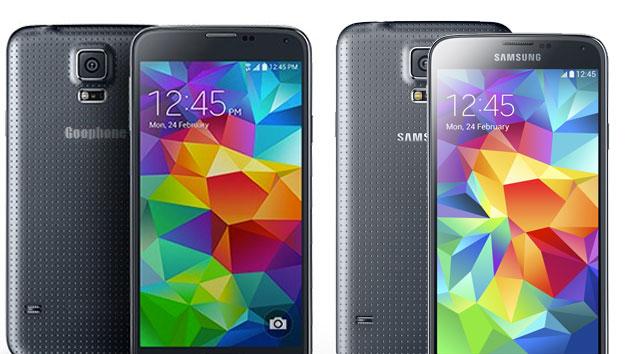
Goophone took just two days to rip off the Galaxy S5
Goophone's a bit like a covers band that just happens to make knock-off smartphones. Not content with just plundering better artists' catalogs, the company has apparently managed to copy the Galaxy S5 in under two days. The Goophone S5, yep, has a 5-inch, 1,920 x 1,080 display, paired with a 2GHz octa-core MediaTek chip and 2GB RAM. Keep looking, and you'll find 802.11 b/g/n WiFi, dual-SIM slots, 32GB storage and a 2,800mAh battery, in addition to 13-and-5-megapixel rear and front cameras. It's available in white, black, gold or blue and is priced at $300, making it the ideal companion for your Lucci bag, Tammy Hilfinger shirt and Seanheiser headphones.

Samsung's new Gear watches are now open to third-party support
Among the many frustrations we had with Samsung's first smartwatch, the Galaxy Gear, was the limited number of apps available for it. While the company offered premium access to select partners, it never came out with a software development kit (SDK) for anyone and everyone to submit their own app. When the Gear 2 was announced earlier this week, Samsung also promised that it would deliver an SDK for its latest series of wearables. At the company's developer keynote at MWC this morning, that's finally changed -- Samsung has announced the "immediate availability" of kits for the Gear 2, Gear 2 Neo and Gear Fit, as well as another SDK for S-Health. There's a bit of a difference between the Gear and the Gear Fit kits, however. The Tizen-based Gear SDK will make it possible for developers to create applications that run on both Gear 2 watches (using both Android apps and web apps), while the Gear Fit version offers an emulator and the ability to control the device from an Android app. We'll continue to update you as we get more information at this morning's keynote. Update: we're not seeing the kits live on the site quite just yet, but Samsung just stated that it'll be available today.
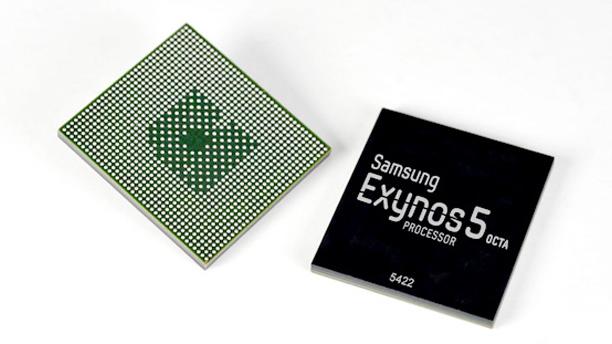
Samsung details the Exynos processors inside the Galaxy S5 and Note 3 Neo
Samsung has been hinting at new Exynos processors for both a Galaxy S5 variant and the Galaxy Note 3 Neo, and today it's detailing the two CPUs in earnest. The GS5's expected chip, the Exynos 5422, is primarily a speed bump of the eight-core Exynos 5 Octa we saw last July; it boosts the clock speeds of the Cortex-A15 and Cortex-A7 cores to 2.1GHz and 1.5GHz respectively. The processor also delivers support for running all eight cores at once, and can handle both 2,560 x 1,600 displays as well as 4K video recording. The Exynos 5260 (aka Exynos 5 Hexa) destined for the Note 3 Neo isn't quite so glamorous, dropping to two 1.7GHz Cortex-A15 cores and four 1.3GHz Cortex-A7 cores. However, it still has many of the features of its bigger sibling -- it can run all six cores at once and use the same screen resolutions. Not surprisingly, it doesn't have the horsepower to record 4K video. Both of the new Exynos designs are either in production or will be by the end of the first quarter, so you can expect to see them in shipping smartphones relatively soon.

MasterCard testing security feature that okays purchases based on phone location
Locking down those credit cards while globe-trotting is always a chief concern. Today at Mobile World Congress, MasterCard and Syniverse announced a joint effort to ease the fears of travelers. The pair is working on a pilot program that will only allow card-based transactions when a user's mobile device is in a specific location. This means that if you (and your phone) are in Barcelona and someone tries to use your card in Madrid, the purchase will be declined. In addition to the security measures, users will have the option of procuring prepaid data packages on said handset upon arrival to insure that the requisite GPS works. Of course, the setup is in testing at the moment, so there's no clear indication when or if the geolocation option will become available.

Breaking the smartphone mold isn't easy. Just ask Jolla
Jolla's got a big problem, and the company knows it. The small Finnish startup has grand plans to upend the smartphone paradigm with its modular phone and unique gesture-based OS, but that foreign approach has left some users confused. The MeeGo-derived Sailfish OS relies entirely on swipe navigation -- there are no soft keys onscreen -- and the current tutorial does a poor job of explaining how it all works. "Many people have difficulties because we suck," said Senior Designer Jaakko Roppola here at Mobile World Congress in Barcelona. "We're not very good at the first-time user experience." That candid admission may ring true for the startup now, but what Jolla is exceedingly good at is listening to and quickly addressing community feedback. That eagerness to please has not only led to recent improvements in battery life and connectivity for the nascent operating system, but also the integration of a user-created WiFi hotspot option.

Samsung unveils Knox 2.0, lets users run Google Play apps even more securely
Exactly a year to the day after it first announced its Knox security solution, Samsung's returned to Mobile World Congress with news that it's making it even easier to secure and manage Galaxy devices. With the launch of Knox 2.0 today, Samsung's changed the way the platform handles Google Play apps, digitally securing their data without the need to run them in a dedicated Knox workspace. Before, personal- and work-related apps were separated, but Samsung says "most" Google Play apps can now live in Samsung's secure world. It's certainly serious about its new features, as CEO JK Shin popped up at the event to drive home Samsung's desire to nail the enterprise market. Samsung wants more secure apps across the board, so it's also launching Knox Marketplace, a dedicated cloud-based app store that lets tech managers grab apps and install them on all employee phones with a few clicks of a button. Box and GoToMeeting are already on board, and there are plenty of enterprise companies already working to make their apps available. Samsung tells us that the new features will begin rolling out in the second quarter, and it'll come pre-installed on the newly unveiled Galaxy S5. First-generation Knox users will get an upgrade to the new version as soon as their devices get an upgrade to Android 4.4 KitKat -- whenever that may be. Steve Dent contributed to this report.










